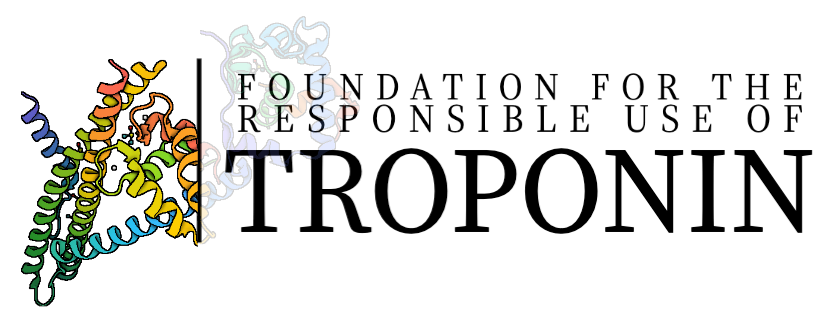Troponins are a class of proteins that play a master regulatory role within the sar-comeres of striated muscle. Owing to their importance, they are evolutionarily conserved, and first appeared in organisms 250 million years ago, before mammalian and avian evolution diverged [2]. The Tn complex is a heterotrimer consisting of troponin C (TnC), troponin T (TnT), and troponin I (TnI) subunits, which associate closely with tropomyosin on the thin filament (actin) [3] (Figure 1). Based on the sliding filament theory, muscle contraction involves interaction between actin (the thin filament) and myosin (the thick filament); myosin exhibits ATPase activity that propels the motion of interdigitated thick and thin filaments past one another through a conformational change in protein structure known as the power stroke [4]. Interaction between actin and myosin is inhibited by the protein tropomyosin and promoted by surges of cytosolic calcium [5]. By virtue of their localization on the thin filament, and interactions with tropomyosin, Tn are well-poised to modulate muscle function.
Fundamental discoveries about the Tn complex were made in the 1970s and 1980s using classical experimental techniques that isolated its constituents using protein puri-fication [6]. Further work revealed that TnC is a calcium-binding protein that responds to increases in cytosolic levels [7]; that TnI is an inhibitory molecule that interferes with actomyosin binding [8]; and that TnT binds to tropomyosin and regulates its position relative to actin [9].
The first component of the Tn complex to be structurally characterized was TnC. Using X-ray crystallography, and later Nuclear Magnetic Resonance spectroscopy, it was determined that TnC has two domains connected by a flexible linker, each containing two calcium binding sites [10]. When the N-terminal regulatory domain (NTnC) binds cal-cium, a hydrophobic patch is revealed, enabling NTnC to bind to the switch region of TnI [11]. Consequently, TnI is relieved of its actin inhibition, so cross-bridge cycling can proceed and muscle contraction occurs. Structural work on TnC is notable because several small molecules, most notably levosimendan, have been shown to bind this protein to increase its sensitivity to calcium, and may be a possible therapeutic target in decom-pensated heart failure [11].
TnI, in contrast to the bi-domain structure of TnC, is a globular protein that binds to several components of the Tn complex: TnC, TnT, tropomyosin, and actin [12,13]. These numerous interactions, some of which are redundant, allow TnI to prevent actomyosin cross-bridge cycling under conditions of low calcium. A notable feature of TnI is the presence of multiple sites for post-translational modifications, which can tune its function based on physiological needs. Classic experiments in Langendorff-perfused rabbit hearts have demonstrated this. For example, inotropic stimulation of an ex vivo rabbit heart causes rapid phosphorylation of TnI at sites S23 and S24 by protein kinase A (PKA). This phosphorylation decreases the calcium sensitivity of TnI, promoting faster relaxation. Rapid relaxation during an adrenergic stimulus is advantageous as it allows the myocyte to prepare for the next contraction [14,15]. Meanwhile, phosphorylation of TnI at sites S43 and S45 by protein kinase C has the opposite effect, slowing the myosin ATPase rate and increasing the calcium sensitivity of TnI [16,17]. In contrast to TnC, which is an important regulator of contractility, TnI can be seen as a primary regulator of lusitropy.
TnT is the largest and most complex protein of the Tn heterotrimer. It forms extensive interactions with TnI, TnC, tropomyosin, and actin [5]. TnT confers cooperativity to the interaction between the myosin ATPase and the actin thin filament [18]. It can also promote inhibition of contraction by strengthening the interaction between actin and tropomyosin.
Gokhan I, Dong W, Grubman D, Mezue K, Yang D, Wang Y, Gandhi PU, Kwan JM, Hu J-R. Clinical Biochemistry of Serum Troponin. Diagnostics. 2024; 14(4):378. https://doi.org/10.3390/diagnostics14040378

